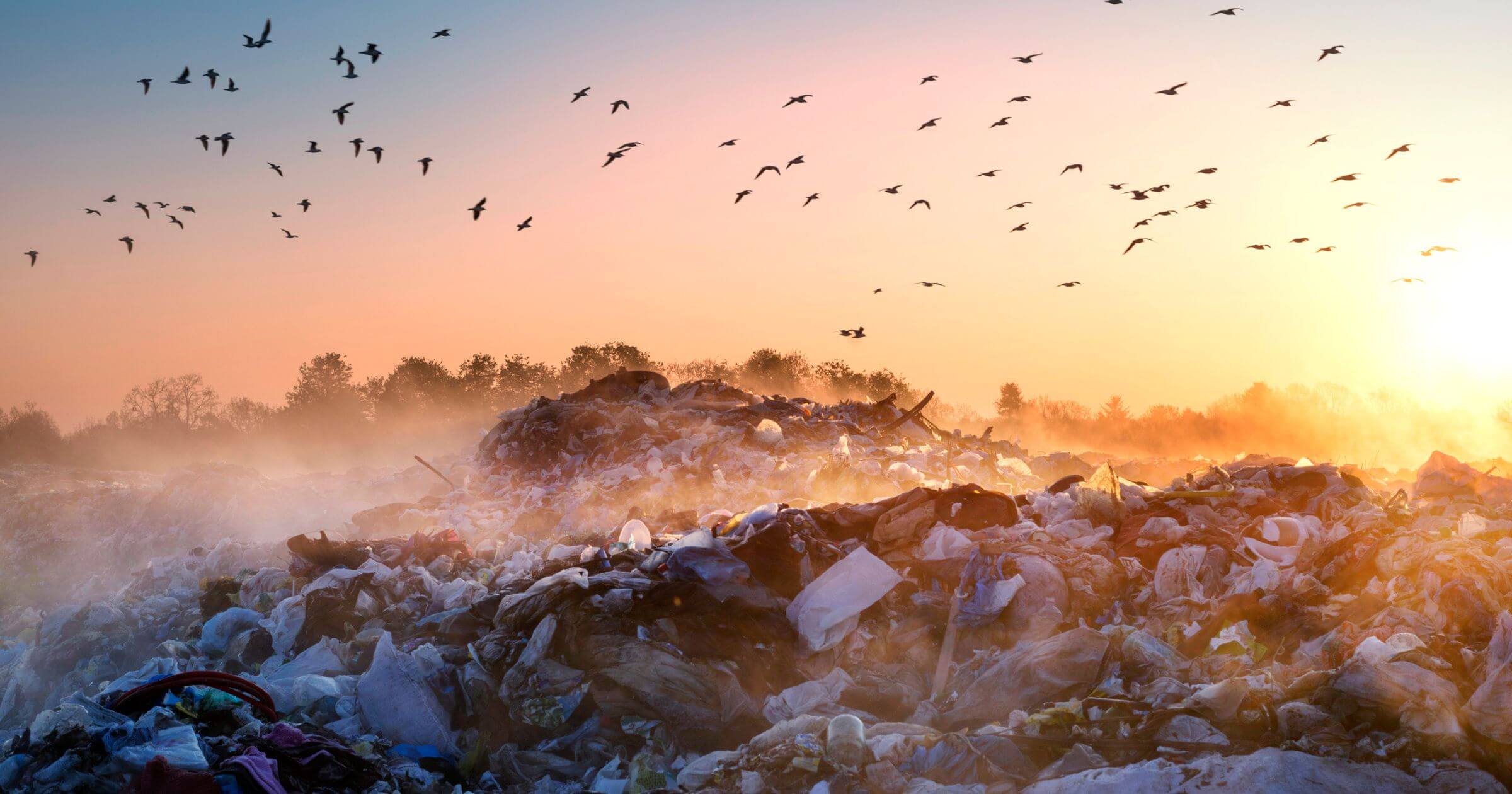
Tamara Davison
Tamara Davison is a journalist who specializes in sustainability and the environment. Reporting from around the world, she's seen firsthand the direct impact waste is having on coastal communities and our oceans. As a diver trained in ecological monitoring, the changes Tamara has seen in marine habitats inspired her to action. She's previously written for The Guardian, The Independent and the Evening Standard. She's also produced environmental documentaries for EuroNews.
In 2020, a study found microplastic particles in the placentas of unborn babies for the very first time. Researchers said it was a “matter of great concern” that humans are exposed to plastic particles before birth.
More studies have also gone on to find shocking levels of microplastics concentrated on the sea bed and in seafood that fishmongers sell for human consumption. Again, there was outcry about how we’ve let this happen.
Fast forward to 2023, scientists disclosed that plastics caused a wide range of illnesses, including cancer, congenital disabilities, and lung disease. The New York Post also published an article in early 2024 asserting that microplastics contribute to a $250 billion yearly health crisis in the US.
Time and time again, we’re reminded of plastic's negative impact on humans, animals, and our environment. Yet here we are in 2024, recycling just 9% of plastic waste and producing more single-use plastic than ever.
Something has got to change — our health depends on it.
What’s on this page?
01 | Key takeaways
02 | How does plastic affect humans?
03 | How does plastic enter our bodies?
04 | What happens when microplastics enter humans?
05 | Who is most affected by plastic in the environment?
06 | How can we prevent plastic from impacting human health?
07 | Summary
08 | FAQs
Key takeaways
Increased efforts to recycle and curb plastic manufacturing indicate that we are becoming more aware of the impacts of plastic on our world. But how does plastic impact human health? Here are the key takeaways:
- The world faces a plastic pollution crisis, and particles that break down from plastic waste products enter our food, water, bodies, and bloodstream
- Scientists have connected microplastics to illnesses, shortened life expectancy, and death. Many legal cases — such as the landmark case in ‘Cancer Alley’ — have been brought forward against the plastic industry related to public health issues
- It’s not just humans that suffer from the impact of plastic. Every living thing on our planet, from our pets to our plants, can be negatively impacted by plastic pollution
- The long-term effect of plastic on human health isn’t even fully understood. Although plastic was first manufactured over a century ago, concerns about plastic pollution only surfaced in 1972. We now have a good idea of the negative impact of plastic on human health, but health studies take time, making it hard to predict what this means for the future
How does plastic affect humans?
It’s important to understand that plastic was seen by many as a revolutionary product, and it can save lives and optimize processes in settings like hospitals. Everything from your raincoat to your car seatbelt is made from plastic, making our lives easier and safer.
However, the rate at which plastic is manufactured and disposed of needs to be more sustainable. The impact of all the world’s existing plastic will have long-lasting effects on human health for centuries. Here’s just a handful of ways that we know plastic affects humans:
1. Production of plastic is linked to respiratory problems
The manufacturing and improper disposal of plastic cause respiratory problems for millions of people around the world.
Plastic manufacturing requires the extraction of raw materials, like crude oil or natural gasses, and energy-intensive processes to turn them into plastic. According to the OECD, 1.8 billion tonnes of carbon emissions were attributed to plastic globally in 2019, equivalent to 3.7% of the world’s emissions.
On top of that, end-of-life plastic practices add to air pollution that can harm human health.
Burning plastic is still a common way to dispose of plastic in most countries, and releases an unprecedented amount of harmful chemicals, such as polychlorinated biphenyls (PCBs), into the air.
Not only is this harmful when inhaled by humans, but it also contributes to climate change. The health issues are even more severe for those in plastic manufacturing and disposal, as they often inhale more plastic particles through their work.
2. Microplastics cause damage to human cells
Scientists have found that microplastics can damage and kill human cells.
In 2021, a study examined human cells exposed to contaminated drinking water, seafood, and table salt. The results overwhelmingly showed that cells exposed to microplastics suffered from cytotoxicity (death of the cell), allergic reactions, and tissue damage.
The scientists also added that more research was needed as it’s unclear how long microplastics remain in the human body and what that impact has.
But why is cell damage bad? Cells have a variety of jobs to do, but they mainly ensure our body is functioning correctly. Changes can weaken a human’s immune system and lead to cell mutations linked to certain cancers.
Want to avoid microplastics? Check out our comprehensive guide to find out more: 7 Products You Should Ditch to Avoid Microplastics.
3. Plastic exposure may impact future generations before they’re born
While the 2021 study couldn’t conclude how cell damage from plastic impacts the human body, other studies have determined that microplastics exist in many body parts — including the placenta, which provides nutrients to growing babies.
Another 2021 paper revealed several microplastic particles on the fetal side of the placenta, as well as the mother’s side. The study revealed that the plastic particles they detected came from artificial coatings, paints, adhesives, and cosmetics.
However, more research is needed to understand whether the microplastics are passed from the mother onto the baby via the placenta.
Reports also claimed that babies have 15 times more microplastics in their bodies than adults due to chewing on dummies and being in closer contact with plastic particles. Since plastic can damage human cells, scientists speculate that exposure at such an early developmental age may lead to later health issues.
4. Forever chemicals in plastic products contribute to the deaths of thousands of people
Forever chemicals is the name given to a family of indestructible perfluorinated and polyfluorinated substances (PFAS). The issue is that these chemicals exist in many products, including plastic food containers and cosmetics. What’s more, they’re harmful to human health.
One study found that between 91,000 and 107,000 premature deaths in people aged between 55 and 64 in the US resulted from phthalates — a chemical used to make plastic durable.
Humans don’t just ingest PFAS chemicals when using plastic products; they also leak into the environment from various industrial processes. Because these chemicals don’t degrade, they linger in the environment and can even seep into food supplies.
5. Humans eat thousands of plastic particles each year
Researchers believe humans ingest roughly 53,864 plastic particles yearly from seafood — equivalent to 17 credit cards.
This Earth Day report also claims that there are 28 plastic particles per liter of beer due to microplastics in water and crops used to create alcohol. Fruit and veg similarly absorb microplastics through their roots, meaning many food sources contain microplastics.
Humans don’t just ingest plastic through food and drink; it can also enter our skin. Many cosmetic brands use plastic in their products and creams, which our skin’s barriers may absorb into our bodies.
According to reports, even our clothes — made from synthetic materials like polyester — can shed microplastics that our skin might absorb.

How does plastic enter our bodies?
As you can see, plastic particles pose considerable threats to human health. Unfortunately, many of these microplastics are impossible to see with the naked eye, so they can enter the human body without being noticed.
Here are some of the main ways that plastic enters our bodies:
1. Breathing polluted air
Scientists have found plastic particles at the top of the world’s highest mountains and at the bottom of our oceans. It’s also in our air, with researchers even discovering microplastics in the clouds.
When we breathe in air pollution, these particles can enter our lungs and bloodstream, impacting our health. In 2019, the World Health Organization found air pollution contributed to 4.2 million premature deaths worldwide, and waste management was a huge factor.
2. Eating and drinking
Plastic particles can travel up the food chain, eventually being ingested by humans. It can start in our oceans, where most plastic waste ends.
Researchers found that fish in the North Pacific Ocean collectively ingest up to 24,000 tons of plastic yearly, and a quarter of fish in California food markets contained plastic in their gut. When consumed by humans, these plastic particles may pass into our digestive system, contributing to health issues.
Even vegetarians might be at risk of consuming plastics in their diets. More recently, studies found that apples and carrots harbor some of the most extensive amounts of plastics among fruit and vegetable supplies.
Moreover, if you drink or cook with bottled water, researchers estimate that an average of 325 plastic particles are in every liter of bottled water.
3. Packaging
The packaging market uses approximately 39% of the world's manufactured plastic. Plastic is a cost-effective and sanitary way to transport and market various goods, particularly food.
It’s so abundant that some retailers go as far as packaging fruits with skins like bananas in an extra layer of plastic for no apparent reason.
Many studies have found that factors like sunlight, heat, and physical stress can cause plastic packaging to degrade and shed microplastics to whatever it’s holding — like food.
What happens when microplastics enter humans?
Researchers have widely acknowledged that microplastics enter the human body and affect health. However, studies into microplastics' broader effects on the human body are still relatively new.
It means we might not yet be able to fully grasp how plastics affect the human body and how long microplastics stay in the body.
A South Korean study in 2023 suggested that microplastics stimulate the release of endocrine disruptors in our bodies. These can mimic or interfere with the job of hormones, ultimately affecting our body's natural processes.
The medical community has linked endocrine disruptors to thyroid, breast, and prostate cancer.
Microplastic particles can also become lodged in our airways, according to another study published in 2023. Again, the full impact of this is yet to be understood.
According to Fast Company, the professor leading the survey, Saidul Islam, said: “We need more studies on how plastic embeds in the lung surface, how it acts on the lung surface, how its toxicity increases over time, and how it creates the diseases.”
In another 2023 study, scientists found microplastics in samples from patients undergoing heart surgery and in each patient’s blood.
While tests have previously found plastic in places with external access — like our airways — this proves plastic is also found in body parts without external access, suggesting that plastic can travel around the body via our bloodstream.
Who is most affected by plastic in the environment?
We are all impacted by plastic in some ways, but certain people bear the brunt because of factors like their location or economic status. These include:
Coastal communities
Coastal communities often rely on fishing for their food, as well as their income, meaning they might experience higher exposure to microplastics and more plastic pollution washed up on their shores.
Plastic pollution contributes to climate change, so coastal communities may face rising sea levels as an indirect response to plastic.
Low-income communities
The United Nations Environment Programme (UNEP) released a damning study that said plastic pollution disproportionally impacts marginalized communities. Two billion people don’t have access to proper waste management, meaning many households end up burning their plastic waste close to their homes.
On top of that, 2.2 billion don’t have access to safe drinking water, meaning they’re more exposed to harmful contaminants from the air they breathe and the water they drink.
To make matters worse, many wealthy nations ship their plastic waste to developing countries, further adding to the health burden people face there.
Informal waste pickers
People at the forefront of the plastic crisis include those who manage waste. Informal waste pickers sift through landfills, often in developing countries, and find items for recycling.
They have no workplace protections or health support, yet through their work, they are exposed to hazardous materials and fumes from burning landfill waste. One study found the average life expectancy of a waste picker in Mexico was just 39 years old.
How can we prevent plastic from impacting human health?
We know this article is a lot. There are some genuinely shocking connections that scientists have found between plastic pollution and human health.
So, let’s look at how we can stop this crisis from worsening.
Reduce plastic packaging
Cutting down on plastic packaging immediately can help curb waste in our oceans and its impact on human health. There is a growing awareness and incentive to replace plastic with natural, sustainable, and biodegradable alternatives.
Some might say this is suitable for bamboo toothbrushes and paper bags, but certain plastic items like medical supplies or safety equipment simply cannot be replaced yet. To this, we’d argue that it is high time for more research and development into plastic alternatives that are durable and planet-friendly.
Improve waste management
Much more can be done to improve waste management, particularly in developing countries where most of our trash ends up.
The key lies in better education, communication, and facilities. Instead of open-air landfills, we should aim for sustainable alternatives and infrastructure that make recycling environmentally friendly and economically viable.
The support of the Western world will be essential in making this happen.
Recover plastic waste from the open environment
Plastic can take up to 500 years to biodegrade — and throughout that period, the item will continue to release plastic particles into the environment.
Whether in landfills or oceans, allowing plastic waste to pollute the local environment persistently has long-term impacts on our natural world and public health. That’s why recovering plastic waste and adequately dealing with it is crucial to reducing the long-term effects.
CleanHub works with coastal communities to achieve just that. We support local communities in collection and recovery efforts, helping to empower and incentivize plastic clean-up initiatives. We do this with the support of business leaders who care about making a difference, helping to fund waste collection and offset their plastic footprint at the same time.
Create a circular economy
The end goal should be working toward a circular economy, as it ultimately removes the waste issue altogether.
By keeping things in circulation, we reduce the need to extract raw materials and help support a more environmentally friendly future. A circular economy model also goes beyond plastic and could catalyze the adoption of sustainable practices in a wide range of areas worldwide.
Summary
Most research points to one clear reality: plastic can negatively impact humans in many ways. What’s also evident is that the approach to plastic waste is no longer sustainable, and our health depends on it.
If plastic damaging our environment wasn’t enough, the emerging health crisis should inspire our communities, businesses, and governments to take meaningful action.
Armed with the knowledge that plastic pollution has these effects on humans and aware of the urgency of this challenge, we can start making real change. This shared responsibility can help reshape our world, one plastic bottle at a time.
Want your business to support a plastic-free future? Connect with us to discover how you can start making an impact by reducing your brand’s plastic footprint. Once we’ve received your details, our experts will be in touch to discuss your tailored plan.
FAQs
What are the effects of plastic on humans?
Plastic impacts humans in many ways, from the air we breathe to the food we eat. As a result of waste, air pollution, and packaging, we’re exposed to plastic particles in most areas of our lives. Early scientific studies believe it’s contributing to a mounting health crisis.
How does plastic affect our daily lives?
You’ve probably already ingested some plastic just while reading this article. Perhaps you drank from a plastic bottle or warmed up your lunch in a microwavable container. Plastic affects almost all parts of human life, and most of us are unaware.
How does plastic affect the environment?
It’s thought that around 90% of plastic waste doesn’t get recycled, meaning it’s either sent to landfills, incinerated, or discarded in our environment. Most of this will end up in our oceans, where animals ingest it and may even work into our food chain.


.webp?width=380&name=Colourful%20corals%20(1).webp)
.webp?width=380&name=solar-collection%20(1).webp)
.webp?width=380&name=Plastic-pollution-surface-of-water%20(1).webp)
%20(1).webp?width=380&name=Pile-of-plastic%20(1)%20(1).webp)

%20(1).webp?width=380&name=Plastic-on-the-beach%20(2)%20(1).webp)

.webp?width=380&name=River%20waste%20(1).webp)
.jpg?width=380&name=Microplastics%20in%20hands%20(1).jpg)
.webp?width=380&name=recycling%20(1).webp)
